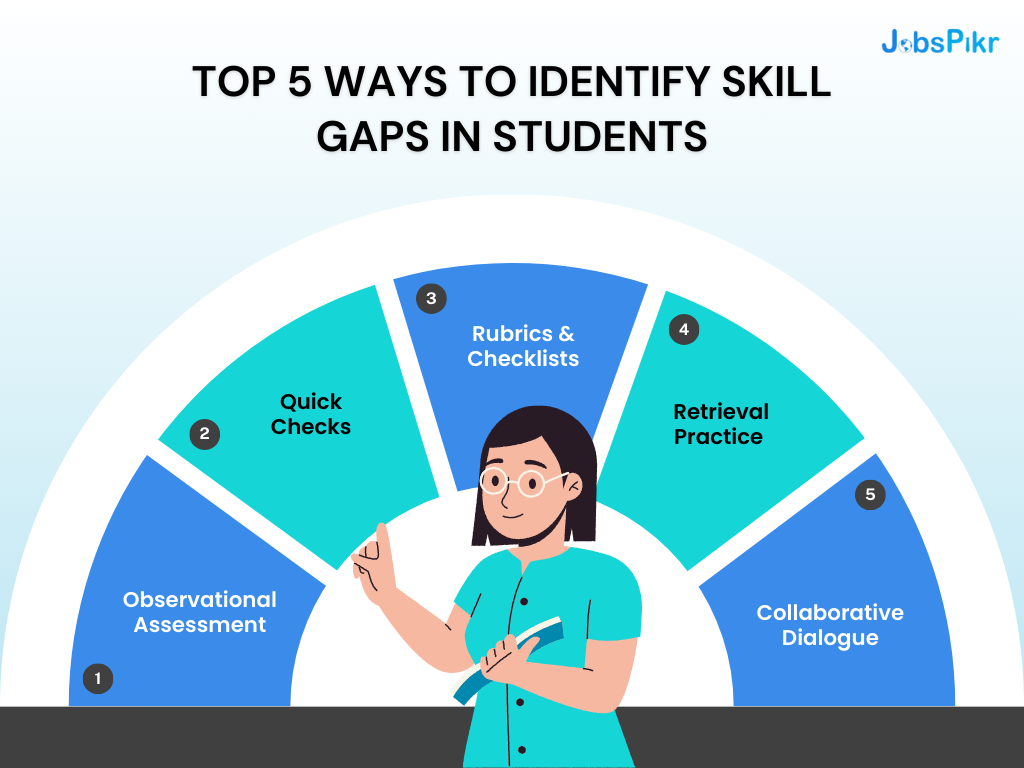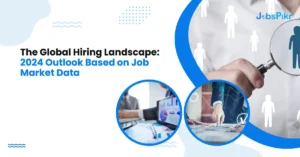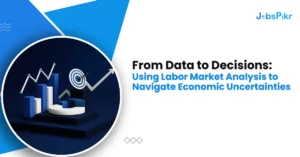Are you aware of your students’ individual strengths and weaknesses? To effectively support their learning journey, invest time in evaluating their performance and uncovering potential skill gaps. Recognizing these discrepancies enables you to tailor your guidance, fostering improvements in their overall comprehension and capabilities.
In this article, we shall discuss several techniques for accurately gauging your students’ grasp of essential concepts and offer advice on remedying detected disparities. So let us delve right in!
Knowledge and skill gaps are the #1 reason teachers decide to change or create lessons. If your students don’t have what they need to succeed, then their “failure” is your fault.
Top 5 Ways to Identify Skill Gaps in Students
How do you identify knowledge and skill gaps in your students? Here are five ways:

1. Observational Assessment: The first way to identify knowledge and skill gaps in your students is by observing them closely over time. This works especially well if the class has had the same teacher for more than one year (or even better – for many years). By watching how they make mistakes, what confuses them most often, and struggle with tasks, you can tell what they know and don’t know.
2. Quick Checks: Give your students an example of a concept, task, or assignment. Ask them how they would show what you just showed them. This is a great way to identify gaps in knowledge and skill quickly.
3. Rubrics & Checklists: Leveraging rubrics, checklists, and additional evaluation tools can offer a comprehensive perspective on students’ mastery of concepts and competency levels, thereby enhancing overall accuracy and depth in assessing their knowledge and skills.
4. Retrieval Practice: Ask questions from the book, from the workbook from any resource you use with your class. If a student can’t answer a question that was answered correctly just one lesson before, then there’s a very good chance that this student didn’t learn what he/she should have learned to succeed on this assessment.
5. Collaborative Dialogue: Discuss the content among yourselves – share it over lunch at home with friends or family members. If a question or a concept comes up repeatedly, then there’s a very good chance that your students don’t have what they need to understand.
Knowledge and skill gaps are inevitable, but they need to be identified so that students can take action. Here’s how to do it.
The importance of recognizing knowledge and skill gaps in your students cannot be understated. How you identify these gaps will determine how well your students perform in class. If you skip this step, the student may not know where to begin when developing an effective study strategy for tackling their academic challenges. The following two methods should help you pinpoint deficiencies in your student’s learning profile:
Skill Gap Assessment Method 1: Ask Your Students
One common method is asking each of your students what they know about a particular subject or concept (e.g., Shakespeare). However, I wouldn’t recommend using this approach because it doesn’t provide you with an objective measure of what your students do and don’t know. You can then determine their strengths and weaknesses by asking how confident they feel about their knowledge and skills.
Skill Gap Assessment Method 2: Observer Behavior & Assessments
A better way to identify skill gaps is through observations made during class activities and assessments. A student’s behavior (e.g., tentative, rushing, lack of eye contact) provides a wealth of information on what they know—and how much you can challenge them in the next lesson without overwhelming them. In addition to knowing the content being covered, it’s equally important to understand your students’ abilities so that you can adapt instruction accordingly if some are struggling. In contrast, others are ready for more complex material.
Conventional wisdom suggests that teachers base their curriculum on the average student’s ability. However, this strategy is often not well-received by students who are frustrated with being ignored or underestimated. These students may become disengaged and achieve poorer grades as a result of receiving instruction based solely on what they could do instead of what they were capable of learning.
What’s important about assessment is knowing your limits so you can provide an appropriate challenge for each student (e.g., working 2-grade levels above). Suppose assessments show that students need more work before transitioning up to the next level. In that case, you’ll need to continue placing them at the lower level until they’re ready for advancement—even if it takes longer than expected.
Several ways can be used both individually and collaboratively to help you develop an understanding of where your students’ strengths and weaknesses lie while also taking into account their proficiency levels:
Observing one’s classes (self-observation) – While observing one’s class, instructors can quickly identify common misconceptions or errors made by students, allowing them to target lessons accordingly. Sometimes identifying areas for improvement can be as simple as listening to student questions or comments throughout the class.
Particularly during interactive activities, instructors should pay close attention to what types of problems students are having, the way they are approaching them, and whether similar issues have come up in past courses. If so, instructors should consider making changes before repeating the same errors.
Asking students about themselves –
When it comes to honing in on areas where students might require extra assistance, seeking direct feedback from them regarding their perceived achievements within the course can prove incredibly beneficial, particularly around milestone evaluation points like midterms. Moreover, acquiring insight into topics that genuinely pique their interest lays the groundwork for personalized lessons down the line.
Not only does this promote curiosity and involvement, but it ultimately leads to improved overall understanding. So go right ahead, tap into those young minds and let their thoughts and interests shape your teachings!
Reading student work – Instructors should always pay attention to what types of questions they ask and students’ methods for arriving at correct answers. If many different students make the same mistake, or if a common misconception is consistently corrected in assignments and exams, instructors will want to ensure that material is presented correctly in class.
Collaborative dialogue between colleagues (peer observation) – Instructors can engage other colleagues from their department or beyond into helping build an understanding of the strengths and weaknesses of their students by engaging in peer observations.
Conclusion
To determine any shortcomings in your students’ understanding and abilities, implementing formative assessments is recommended. These evaluations offer valuable insights which allow for tailored teaching methods aimed at supporting your students’ growth and education. Additionally, they assist in monitoring each student’s progress towards achieving educational objectives.
As you commence the task of analyzing skill gaps and rectifying them among your students, it is imperative to keep abreast of current developments and expectations within the employment sector. By staying informed about the capabilities desired by employers, you can effectively direct your teaching endeavors toward shaping a more promising pathway for your students.
One valuable resource for obtaining such insights is JobsPikr, a platform that offers reliable data on the most sought-after skills across various industries. Utilize this information to align your educational objectives with real-world demands and empower your students to excel in tomorrow’s workplace.




